Brewing techniques
6/28/2022, 9:46:41 AM
The Espresso :
A type of coffee made by brewing in a special way. It is made by forcing a small amount of nearly boiling water under pressure through finely ground coffee beans. It has a higher concentration of suspended and dissolved solids which makes it thicker and much stronger. Espresso has more caffeine per unit volume than most other types of coffee, but is served in smaller sizes.
Espresso is made with espresso machine of which there are steam-driven machine, piston-driven pump-driven and air-pump-driven
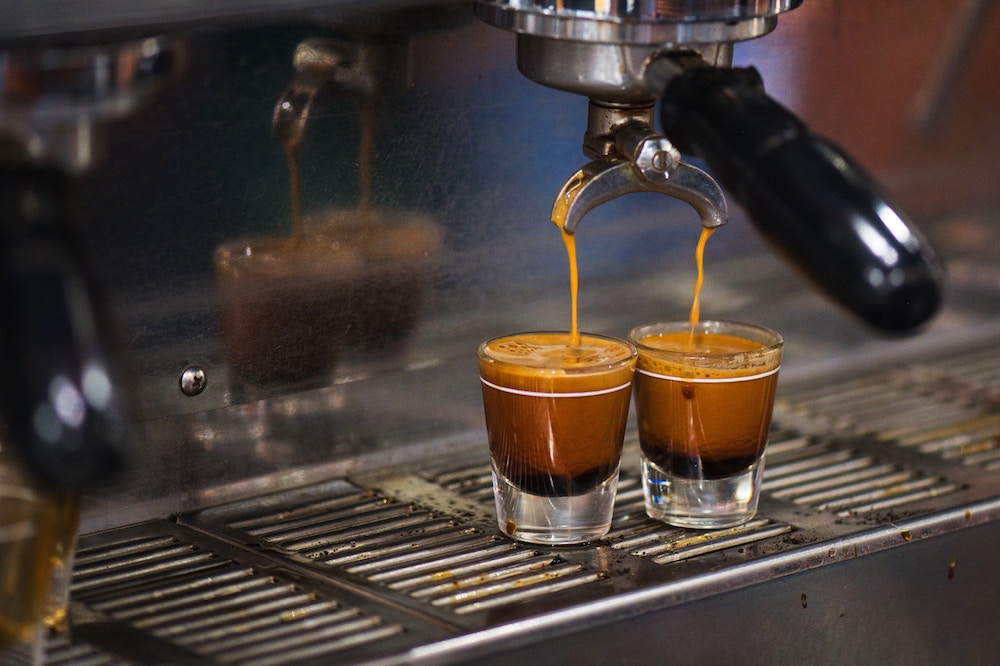
The fineness of a coffee grind affects the easibility of brewing, however, when you use very fine grinds, gravity alone can often not be enough to push the water through the coffee mix, which is why espresso was invented; the name 'espresso' derives from the improved speed which this method can provide.
Espresso machines essentially create extreme pressures within their system to better force water through coffee.
Also associated with such a coffee-type is the term 'crema’. This is the additional layer of dense foam that is produced on the top of any espresso coffee. Such a layer exists due to the espresso's pressures forcing the water to dissolve more carbon dioxide. Upon coming out of the machine into room temperature, it becomes a bubbly foam layer. Beyond being aesthetically pleasing on any coffee cup, it actually signifies the freshness of a coffee grind; if the coffee grind wasn't so fresh, there would be less carbon dioxide and therefore this layer wouldn't exist so much. The darkness of the foam layer
also reflects the strength of the coffee.
Firstly, add ground coffee to a handled container that contains a super-fine filter on it's base. Next compress the coffee down - this is called 'tamping' -into the container. The combination is then affixed into place in the espresso machine through activation of the machine's pressure system. The machine will then begin to work as it pumps a specific amount of hot water through the coffee container, dripping out into a cup placed beneath. Based on your skill level, some machines will be easy to understand and use, whilst others will allow you to nicely tailor your coffee brew.
The Automatic Drip Method
The auto-drip method is still by far the most widely used. Why? Well, coffee brewing with auto-drip is very convenient, not complicated with a clear result.
Let's keep it really simple:
To get the best results with your auto-drip coffee brewer, learn about your specific machine that you bought as there must be ten thousand different makes and each one has its own peculiar specifications.
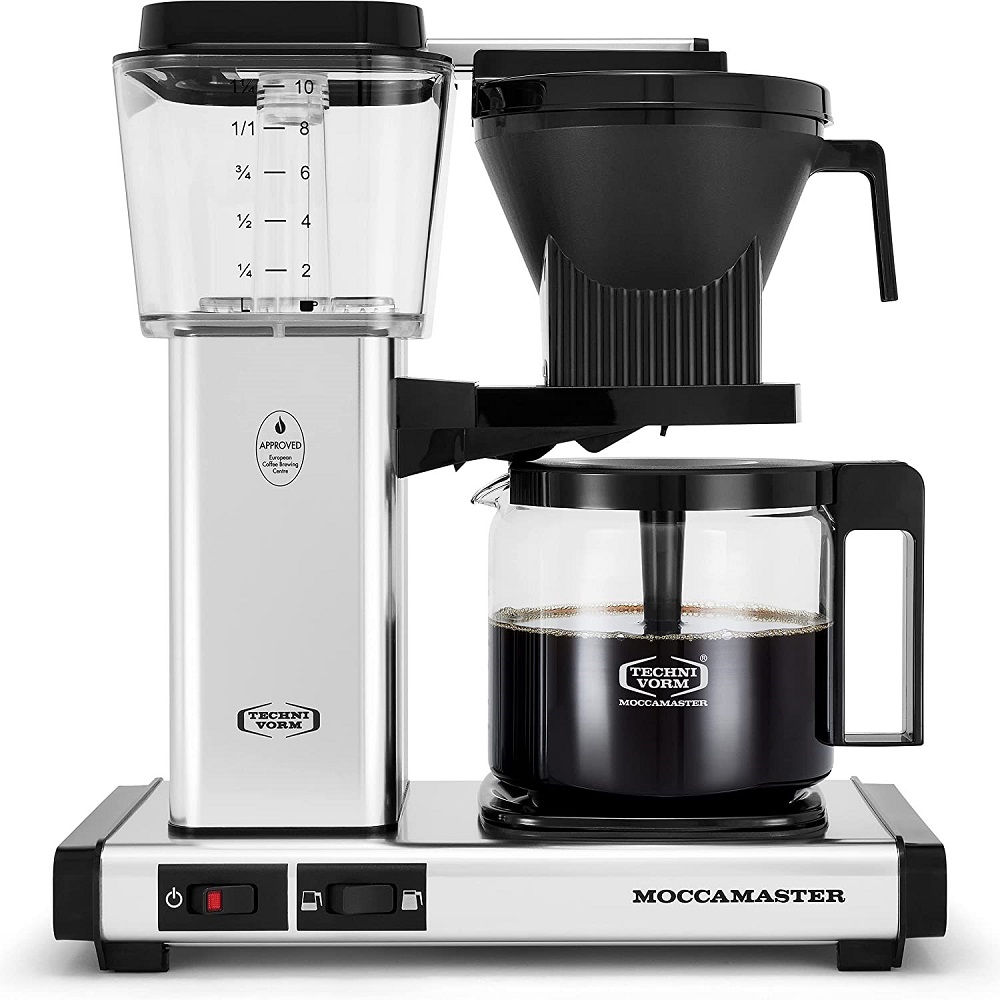
Brewing with an auto drip-maker that uses a cone filter requires a medium-fine grind.
Coffee is 99% water, so you're not likely to experience the perfect cup with bad water. Bottled or filtered is best, the latter with some type of reverse-osmosis or carbon filter will best do the trick. Your coffee brewing equipment will stay happier and healthier too!
Brewing With a Chemex Maker
What is a Chemex Maker? Well it’s similar to Auto Drip Brewer but without the Auto option.
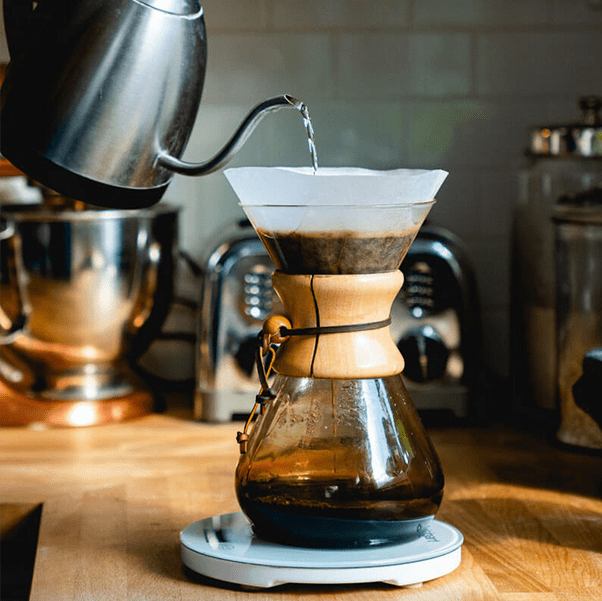 The Chemex brewer's classic hourglass design is actually an American original and has been honored by the Museum of Modern Art. Its shape creates a built in filter basket but tends to make cleaning a bit tricky.
The Chemex brewer's classic hourglass design is actually an American original and has been honored by the Museum of Modern Art. Its shape creates a built in filter basket but tends to make cleaning a bit tricky.
Chemex gets you fully engaged in the process of brewing, and it makes great tasting coffee.
The French Press or Press Pot (Also Known as a Plunger Pot)
One of the best methods of coffee brewing to experience "The Perfect Cup". It produces a thick, rich cup, full of the aromatic oils that give coffee its flavor.
Also the classic French Press is quite a romantic fixture. It evokes visions of intimate conversation at quaint outdoor cafes on tucked away; lamp lit streets wherever your imagination may take you.
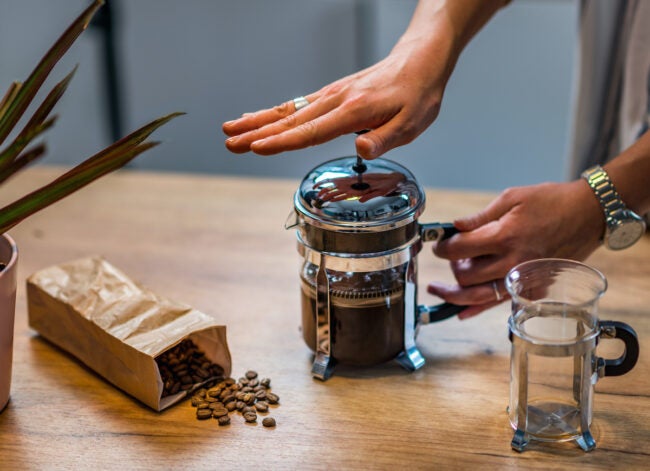 This method of coffee brewing requires that the grounds be stirred directly into the hot water and there is no paper filter, thus the thick, earthy body.
This method of coffee brewing requires that the grounds be stirred directly into the hot water and there is no paper filter, thus the thick, earthy body.
Since a Press Pot doesn't actually contact a heat source, it is a good idea to preheat the plunger and pot with warm water.
Coffee Brewing: For each cup, measure two level tablespoons of medium to coarse ground coffee into the the glass pot. Your water should be "fresh off the boil" and stirred directly into the grounds with a long handled wooden spoon.
Stirring makes certain that the grounds are saturated and properly extracted.
Now set the plunger top in place. Press the plunger down just far enough to eliminate any air. Cover the whole unit with a towel and let the grounds steep. After 4-5 minutes press the plunger down firmly but slowly.
Pour and enjoy!
Cold Brew
For those who can't handle coffee’s natural acidity, your remedy is drinking cold brew coffee.
You can use your favorite coffee to produce a coffee concentrate that is much stronger than hot brewed coffee, yet 67% less acidic. It produces a bold, super-smooth brew that can be refrigerated for up to 10 days with no loss of quality.
 Just ask for our grinded coffee, pour water and put it in the fridge for 12 hours. Strain and keep in the fridge. To make it sweet, you can add vanilla or hazelnut syrup for a yummy taste.
Just ask for our grinded coffee, pour water and put it in the fridge for 12 hours. Strain and keep in the fridge. To make it sweet, you can add vanilla or hazelnut syrup for a yummy taste.
The V60
This method of brewing is almost identical to Chemex except the system breaks down to facilitate easier cleaning and the Chemex filter is thicker which requires more time to filter the coffee.
The other pros and cons are the same: You need to heat your own water and manually pour it through the coffee and it should either be consumed immediately or poured into an air pot or insulated carafe to keep it hot.
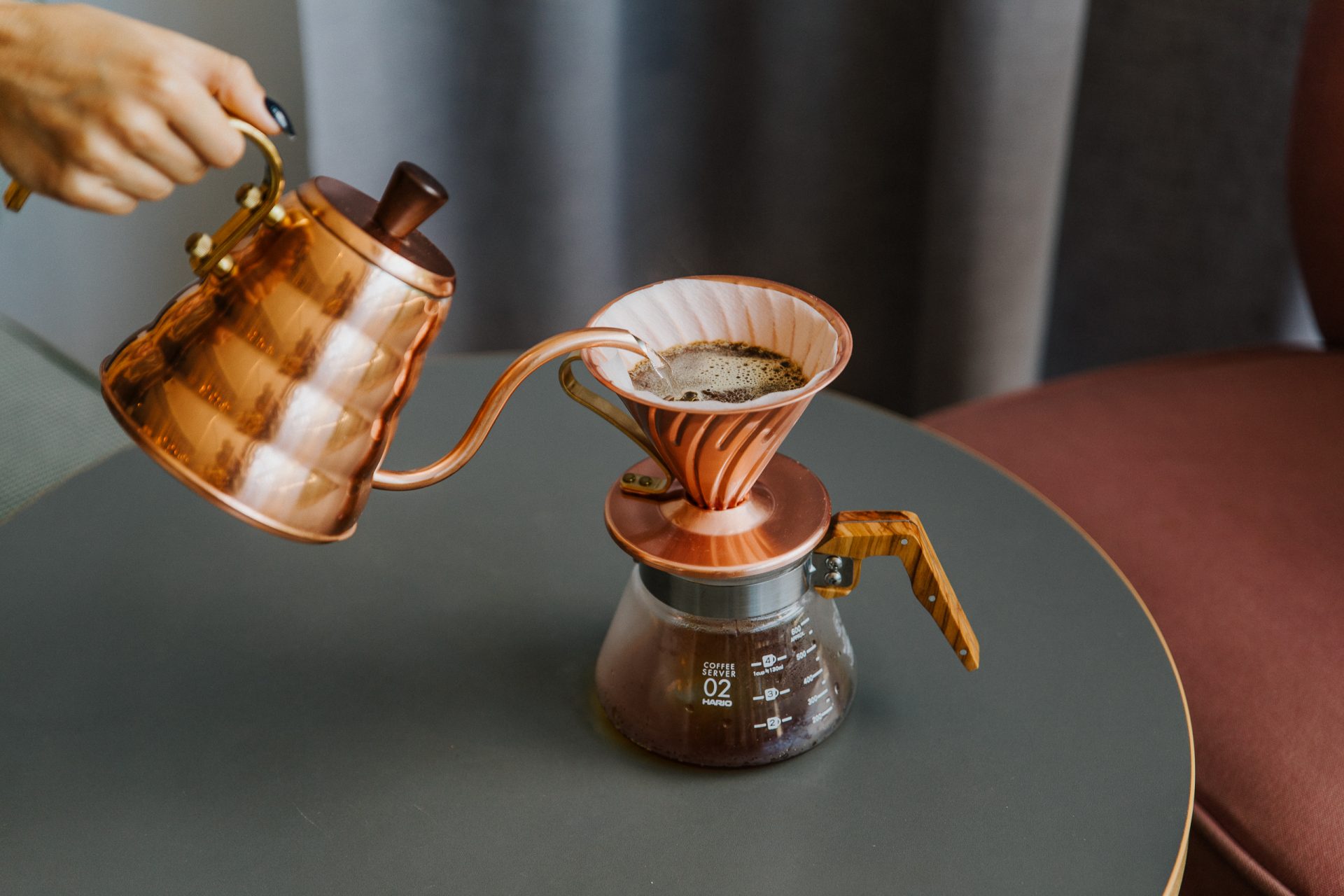
The big plus is that you have complete control over the water temperature and the amount of time that water is in contact with the grounds. Water "just off boil" is perfect for brewing and from 4 to 5
minutes is optimal for brewing time.
Any of the manual drip methods make it possible to tweak the strength and body of your coffee to your hearts content.

